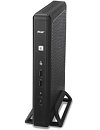
Acer Introduces the TravelMate P453 Business Notebook
Designed to boost business productivity with advanced performance and multi-level security, the new Acer TravelMate P453 is the answer to the needs of SMB/SOHO looking for the perfect balance between security, productivity and ergonomics. All details have been fine-tuned by Acer to offer the optimal user experience whether in the office or on the go.
Acer takes the protections of users' data and valuable assets very seriously. To secure the IT investment, protect data and reduce TCO thorough remote management features, the TravelMate P453 comes with Acer ProShield Security, a suite of security and manageability tools integrated in a unified user interface. Acer ProShield secures the notebook from unwanted access with multi-level security features including BIOS/HDD password protection and Trusted Platform Module (TPM) solution.
Acer takes the protections of users' data and valuable assets very seriously. To secure the IT investment, protect data and reduce TCO thorough remote management features, the TravelMate P453 comes with Acer ProShield Security, a suite of security and manageability tools integrated in a unified user interface. Acer ProShield secures the notebook from unwanted access with multi-level security features including BIOS/HDD password protection and Trusted Platform Module (TPM) solution.




